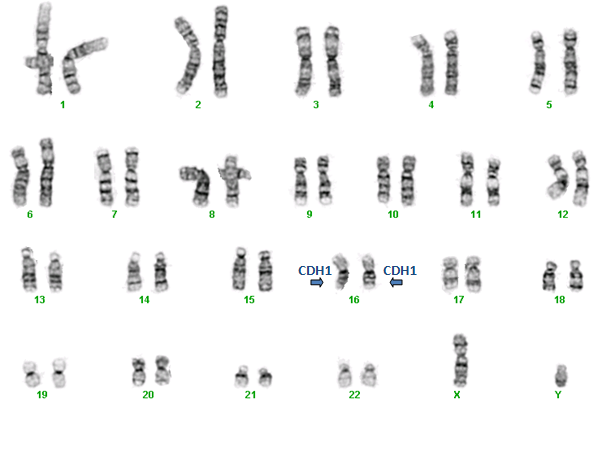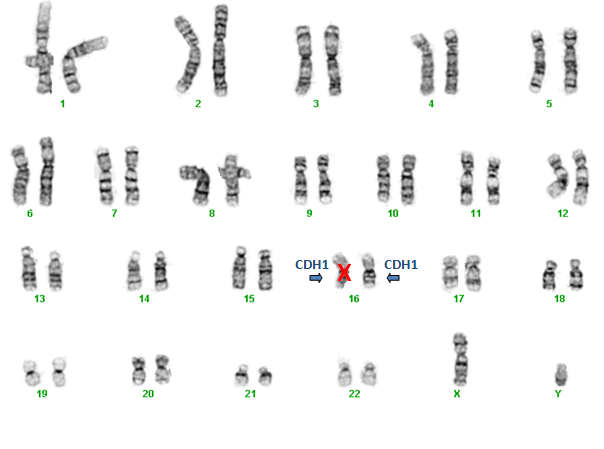Our bodies are made up of trillions of tiny cells. We have skin cells, muscle cells, bone cells, stomach cells, etc. Each cell contains a copy of our genetic code. This genetic code is made up of DNA and is packaged into structures called chromosomes. Although our DNA is extremely important, it is actually a very simple chemical, made up of only 4 different subunits abbreviated A, T, G, and C. (A = adenine, T = thymine, G = guanine, and C = cytosine.) There are about 4 billion A’s, T’s, G’s, and C’s in our genetic code. A gene is a segment of DNA with a very specific order of A’s, T’s, G’s, and C’s. This order of chemicals is called a gene’s “sequence”. Humans have about 30,000 different genes in their cells. Each gene provides the cells with instructions to make a specific product that the body needs to work properly. If there is an error (ie, a mutation) in a gene’s sequence, then the gene cannot provide the correct message for the body, the gene’s product won’t be made correctly, and the body might be missing an important product. Depending on the gene, there might be small or serious consequences.
One gene in our body is called CDH1. When this gene has the correct sequence of A’s, T’s, G’s, and C’s it provides the instruction for the cell to make the e-cadherin protein. Hereditary diffuse gastric cancer is caused by an inherited error (mutation) in the CDH1 gene. This mutation prevents the correct production of the e-cadherin protein.
Everyone has two copies of the CDH1 gene — a copy they inherited from their mother and a copy they inherited from their father. If one of these CDH1 genes has a mutation, then the person has hereditary diffuse cancer syndrome. If someone has hereditary diffuse gastric cancer syndrome, then each child he or she has will have a 50% chance of inheriting the CDH1 mutation (and therefore hereditary diffuse gastric cancer syndrome) and an equal 50% chance of NOT having inherited the mutation (and therefore NOT having hereditary diffuse gastric cancer syndrome).
To understand this more easily, consider the following picture. This image shows the complete set of chromosomes taken from a single human cell. The picture has been magnified many times and the chromosomes have been neatly arranged. Humans have 46 chromosomes in their cells and these 46 chromosomes come in 23 pairs. The first 22 pairs of chromosomes are basically arranged by size, with pair 1 being the largest and pairs 22 and 23 being the smallest. The last pair of chromosomes are called the sex chromosomes – women have two X chromosomes while men have 1 X and 1 Y (as shown). Our 30,000 different genes are spread among these 23 pairs of chromosomes. The CDH1 gene is located on chromosome 16. Because we have two copies of chromosome 16, we have two copies of the CDH1 gene.

A person with Hereditary Diffuse Gastric Cancer syndrome has an inherited mutation in one of their CDH1 genes.

When this person has a child, he will pass on only half of his chromosomes. He will pass on one chromosome from each of his 23 pairs and the child’s mother will do the same. So this gentleman will pass on either the copy of chromosome 16 with the CDH1 mutation or the copy of chromosome 16 that does NOT carry the CDH1 mutation. This process is completely random and that’s why anyone who has a CDH1 mutation has a 50% chance of passing that mutation on to a child. This 50% risk applies separately to each pregnancy. (Note that this example showed a male with a CDH1 mutation. The inheritance situation is exactly the same for a woman with a CDH1 mutation.)
By Amy Stettner, MS, CGC
Genetic Counselor
Madison, WI